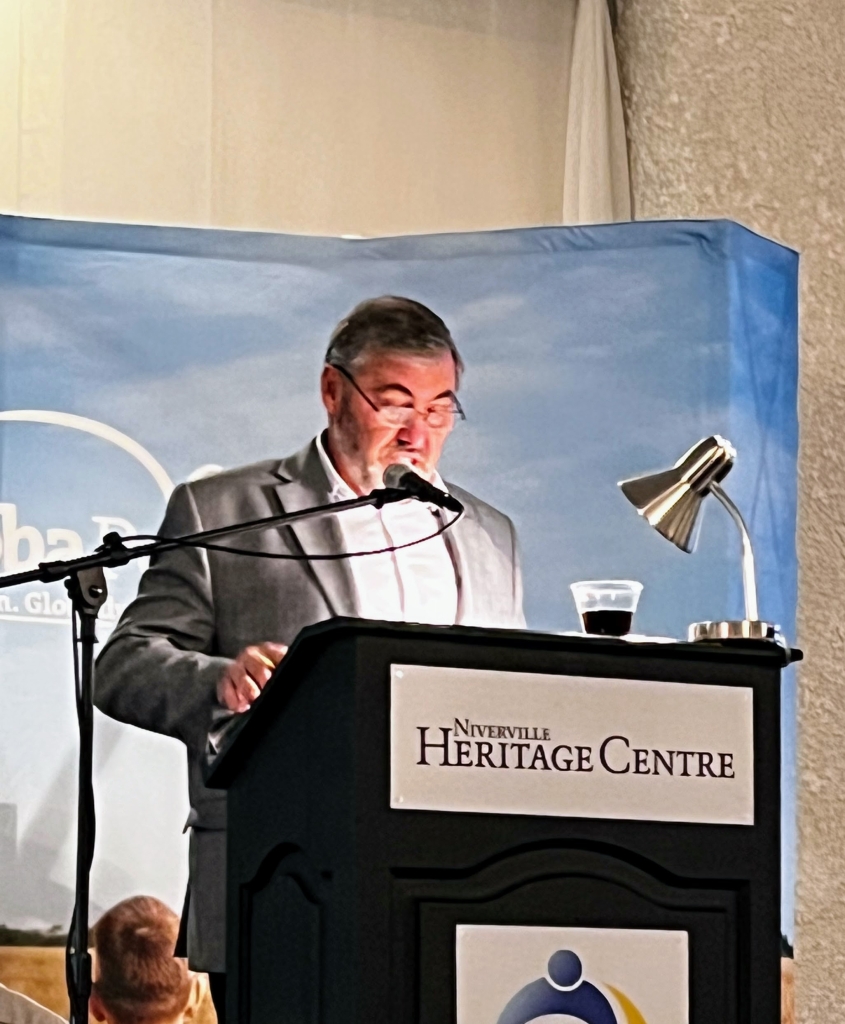
Rick Préjet chair of Manitoba Pork commended a recent announcement by the Manitoba government to increase the veterinary student seats at the Western College of Veterinary Medicine in Saskatoon, SA. A shortage of labour is restricting the growth potential of the hog sector. These additional staff positions will help address one key aspect of this problem, a scarcity of large animal veterinarians practicing in rural Manitoba.
The announcement is a result of months of collaborative dialogue between the provincial government and Manitoba’s livestock producers, including Manitoba Pork, Keystone Agricultural Producers, and the Manitoba Veterinary Medical Association.
“Large animal veterinarians, like those that work in the hog sector, are vital partners in ensuring that producers raise healthy animals and free of the threat of disease outbreaks,” said Préjet. “It will help close the gap in the necessary number of veterinarians practicing in Manitoba, and our sector can continue to grow our herds sustainably.”
The hog sector will continue to work with all levels of government to address ongoing labour shortages, including the lack of large-animal veterinarians. Addressing this shortage could include working to accredit qualified foreign-trained veterinarians who want to work in the province.
Préjett said the struggle to get enough large animal veterinarians has continued for a long time. Many people like to care for cats and dogs, and a lot of those are closer to the bigger centers.
“But once you get into the countryside and focus on larger animals and you got to be on call on weekends and travel in bad weather and other distance-related issues adds to the shortage.”
This announcement adds five new positions taking the vet college from 15 to 20 positions.
“It is one step towards solving the problem because clinics keep looking for veterinarians because of the extra hours to keep up with everything because it’s pretty hard to say no when there are some sick animals. So you’ve just got to go.”
Préjet, a hog producer at Notre Dame, MB said several other key pieces to the puzzle need work with another announcement coming shortly.
One question deals with veterinarians from other countries that are either here or would like to come to Canada.
“We must look closely at these people’s training and compare it to our Canadian standards. For example, write an aptitude test, pass the test and be active here. Or would they need some upgrading, a one-year or two years?”
When they come in, they must go through the whole program again before practising as a veterinarian. So some people come from certain countries for sure, they don’t have the qualifications but other countries could be very close to Manitoba standards and licensed and work in Manitoba.
Préjet said the labour shortage in the hog business continues with everybody struggling because everyone is short. For example, one larger organization is about 10 per cent short in their barns.
“We’re not too bad in our position, but not that long ago, we were about 10 per cent short too. So it’s an ongoing struggle to have enough people in the barns.”
What’s interesting is that much of the immigration is towards people with higher skills or higher education, which is great. However, there is a need for people that need to have training as veterinarians or have degrees. That is a problem because someone brought in a highly qualified person and paid accordingly but they may move on pretty quickly to a management position elsewhere. There’s nothing within your organization. So it would help if you had a mix. What’s the old saying? Too many chefs spoil the soup.
“We continue to promote the industry with local people applying for these jobs.”
But it’s the number one factor in expansion in hog production in Manitoba and probably even for Canada. People say, “Well, it’s very nice. I can put up another 3,000 sow barn, but I need ten more people. Where am I going to get ten more people?” And many people say, “No, I just don’t want to go down that road.”
The number two reason for keeping expansion down is through-the-roof construction costs. •
— By Harry Siemens





